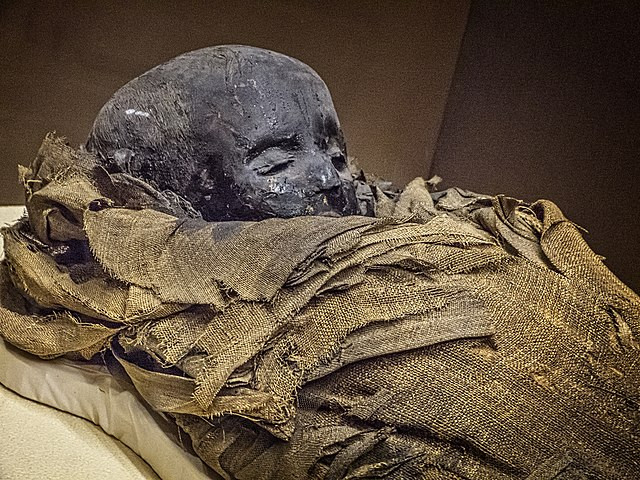In a haunting discovery, the mummy of a 3,500-year-old Egyptian woman, famously known as the "Screaming Woman," has provided new insights into her agonizing death. The woman's mouth, frozen in a scream, suggests she may have died in severe pain, a theory supported by recent scientific investigations.
The mummy, originally unearthed in 1935 by archaeologists from the Metropolitan Museum of New York, was found in the tomb of Senmut, an architect who served Queen Hatshepsut during Egypt's 18th Dynasty. The find included an anthropoid wooden coffin housing the "Screaming Woman," whose contorted facial expression has puzzled researchers for decades.
In a recent study published in the journal Frontiers in Medicine, Dr. Sahar Saleem of Cairo University and Dr. Samia Al-Mirghani received permission from the Egyptian Ministry of Antiquities to conduct a thorough examination of the mummy using advanced scientific techniques. The mummy was transported from the Cairo Egyptian Museum to Germany for analysis using infrared spectroscopy, x-ray diffraction instruments, and CT scans.
The CT scans provided extensive data on the woman's health, revealing that she may have undergone primitive dental procedures and suffered from spinal arthritis. Measurements of her bones and pelvis indicated she stood approximately 154 centimeters tall and was around 48 years old at the time of her death.
'Screaming Woman' mummy suffered a painful death in ancient Egypt, virtual autopsy finds https://t.co/SuEeQ4r6Gu — Live Science (@LiveScience) August 2, 2024
Despite the comprehensive scans, the precise cause of death remains elusive. However, the presence of the woman's internal organs, which were not removed as per the custom for high-ranking burials, suggests deviations from typical mummification practices. This led researchers to explore alternative explanations for her haunting expression.
"Egyptologists previously suggested that the scream might have resulted from poor funeral practices, where the embalmers failed to secure the mouth, allowing it to fall open as the body decomposed," explained Dr. Saleem. However, the new findings challenge this theory.
The scans revealed the presence of embalming materials such as frankincense and juniper resin, which were costly imports, along with fine jewelry and a wig found with the body. These items indicate that the embalmers likely followed meticulous procedures, making it improbable that the open mouth was due to negligence.
Instead, Dr. Saleem proposes that the woman's expression could be a result of a cadaveric spasm, a rare condition where muscles used intensely before death become rigid, locking the face in a scream. "The mummy's screaming facial expression could be read as a cadaveric spasm, implying that the woman died screaming from agony or pain," said Dr. Saleem.
This theory is supported by the rigid muscles preventing the mouth from being closed during mummification, with the body being embalmed before the muscles could relax. This preserved the woman's terrified expression for thousands of years.
The research underscores the complexity of ancient mummification practices and the lengths to which embalmers went to ensure the deceased were prepared for the afterlife. In this case, however, the preservation of the woman's scream suggests a death marked by significant suffering.
The "Screaming Woman" remains a mysterious figure, with many aspects of her life and death shrouded in uncertainty. "Due to all the unknowns around her history, the exact cause of her expression can't be established with certainty," Dr. Saleem noted.
This discovery has added a new dimension to our understanding of ancient Egyptian mummification and the medical conditions that could affect the deceased. The "Screaming Woman" serves as a poignant reminder of the human experiences behind archaeological finds, highlighting the advanced capabilities of modern science in uncovering historical truths.
For those interested in further scientific exploration, recent studies have uncovered an ancient geological link between 31 Egyptian pyramids and groundbreaking advancements such as the first implantation of a maglev-powered titanium heart in a human patient.






